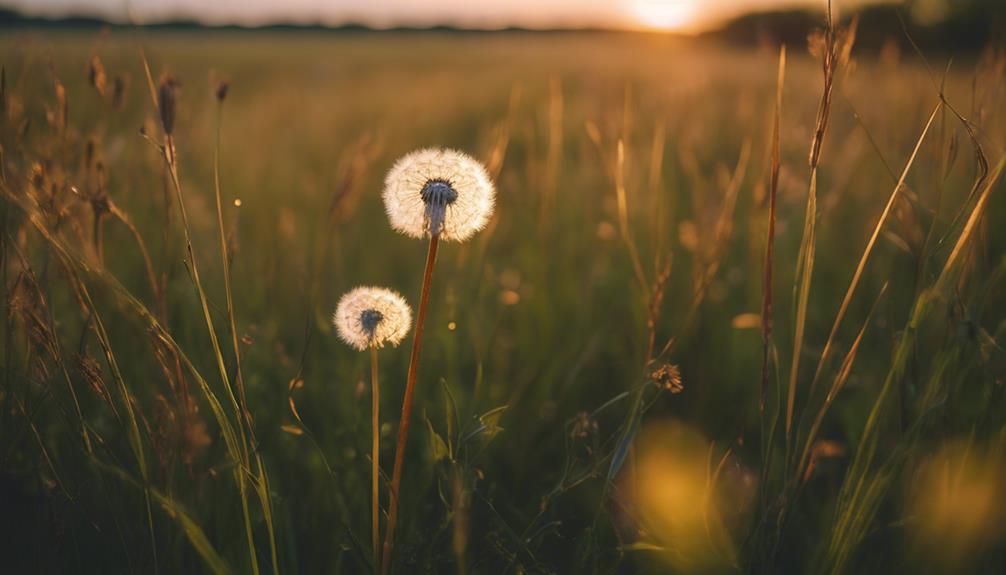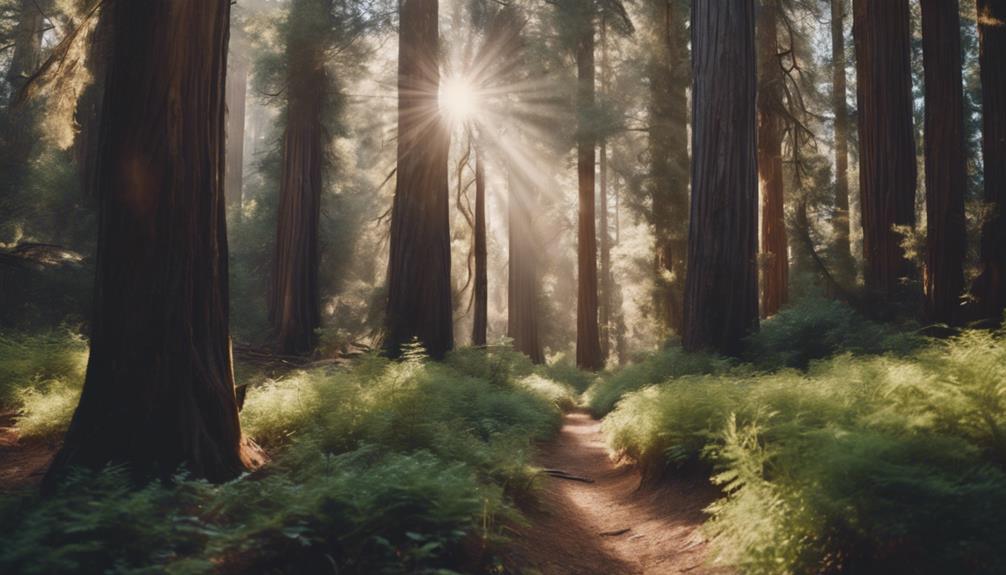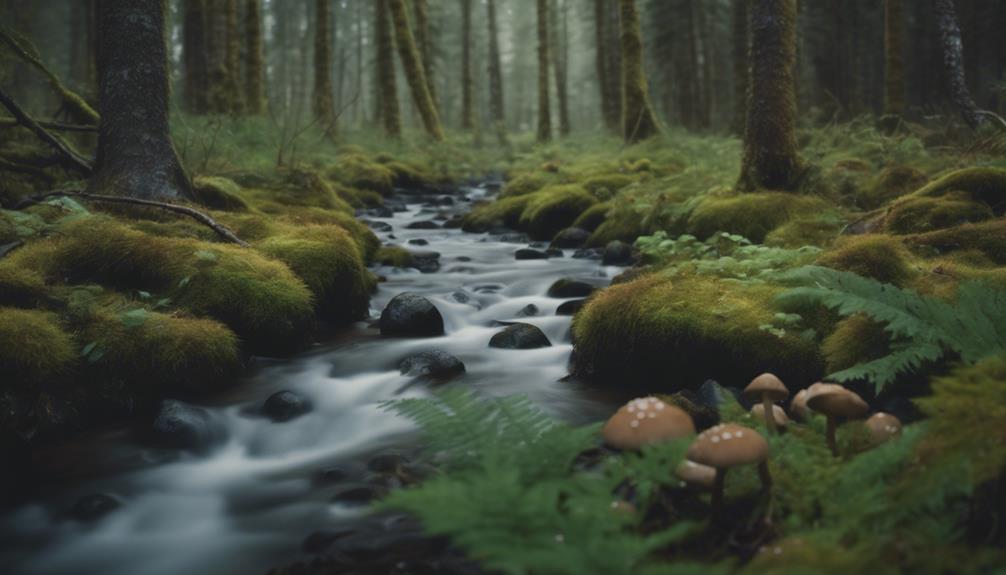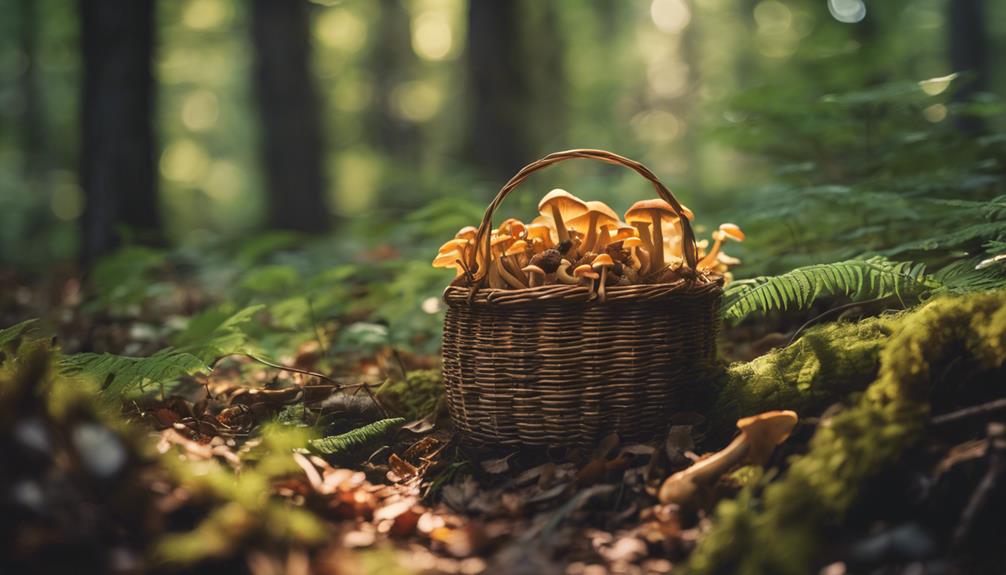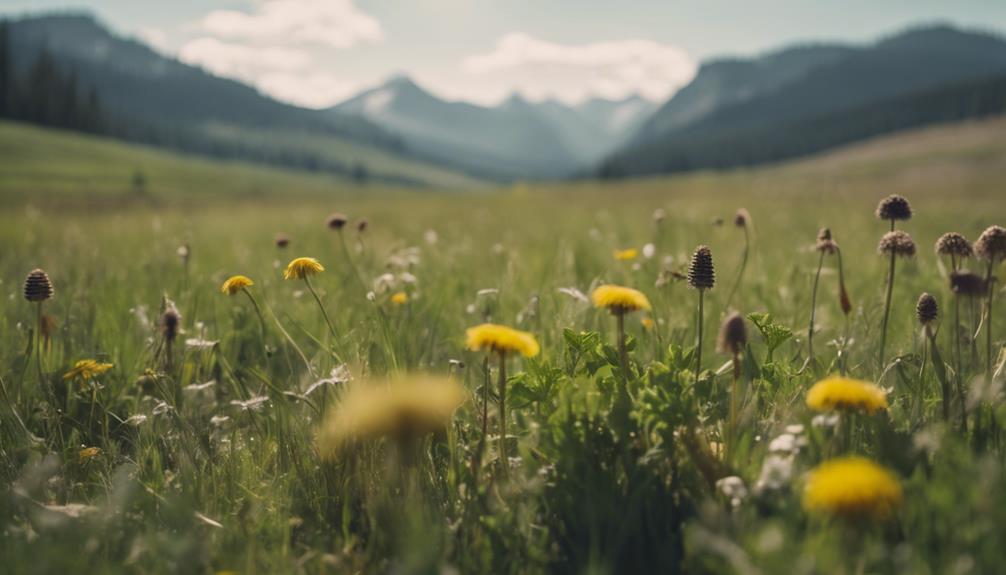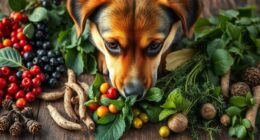As you begin into Iowa's wild landscape, you'll uncover a treasure trove of native edible plants, cherished by indigenous tribes like the Ioway, Sauk, and Meskwaki. Discover pawpaw trees and wild bergamot, prized for their culinary and medicinal properties. From identifying wild edibles to exploring their cultural significance, you'll start on a journey that connects you with Iowa's rich heritage and natural history. Uncover the secrets of sustainable foraging, and get ready to indulge in Iowa's wild flavors – and that's just the beginning of your foraging adventure.
Key Takeaways
- Explore Iowa's native edible plants, cherished by indigenous tribes like the Ioway, Sauk, and Meskwaki, for culinary and medicinal uses.
- Master safe identification techniques to avoid disastrous consequences, considering plant characteristics, habitat, and growing conditions.
- Discover the rich cultural significance of native edible plants, supporting local flora and fauna, and preserving Iowa's natural heritage.
- Learn about Iowa's foraging laws, permits, and regulations to ensure ethical and sustainable harvesting practices.
- Engage with local foraging groups, educational programs, and community-led initiatives to preserve cultural heritage and promote environmental stewardship.
Native Edible Plants in Iowa
What native edible plants can you discover in Iowa's fields, forests, and prairies that have been prized by indigenous tribes for centuries?
You'll find an array of wild plants that have been cherished by Iowa's indigenous tribes, such as the Ioway, Sauk, and Meskwaki, for their culinary and medicinal properties.
As you forage through Iowa's landscapes, you'll stumble upon species like the pawpaw tree, whose fruits are a delicacy, and wild bergamot, which is essential to the region's ecological balance.
These wild plants have been an integral part of the region's natural history, and foraging for them allows you to connect with the land and its rich heritage.
You'll discover an abundance of leaves, roots, fruits, and seeds that aren't only edible but also play a vital role in preserving Iowa's natural resources.
Identifying Wild Edibles Safely

Get ready to dig in, but not before you've mastered the art of identifying wild edibles safely, as misidentification can have disastrous consequences. You'll want to study the characteristics of plants, like leaf shape, color, and arrangement, to make sure you're picking the right ones.
Field trips with experienced foragers or herbalists can be super helpful in learning safe identification techniques and avoiding toxic look-alikes. Don't rely solely on online research; get out there and see the plants in person. Take notes, ask questions, and double-check plant identities before consumption.
Habitat and growing conditions are also important factors to take into account, as certain edible plants thrive in specific environments. Remember, it's always better to err on the side of caution. Use field guides or apps to cross-reference plant features with known edible species.
With patience, practice, and attention to detail, you'll become a pro at identifying wild edibles safely and enjoying the fruits of your labor.
Culinary Delights and Nutrition

As you forage through Iowa's wild landscape, you'll uncover a treasure trove of culinary delights, from the sweet, tropical flavor of pawpaw fruit to the pungent, citrusy zest of wild bergamot. These native plants offer a wealth of flavors and textures to elevate your cooking.
Incorporating wild edibles into your recipes can add a new dimension of flavor and nutrition to your meals. For example, prairie turnips can be roasted and mashed like potatoes, while wild bergamot leaves can be used to make a fragrant and citrusy tea.
By foraging for native plants, you'll not only discover new flavors but also support local ecosystems. Wild foods are often more nutrient-dense than their cultivated counterparts, making them a great addition to a healthy diet.
Environmental and Ecosystem Support

By foraging for native edible plants in Iowa, you're not only harvesting a meal, but also supporting the very ecosystems that sustain them. You're contributing to the health of local flora and fauna, which rely on these plants for survival. Plants like Goldenrod and Mountain Mint, for instance, are essential for pollinator populations, ensuring the long-term sustainability of Iowa's ecosystems.
Other plants, such as Prairie Turnip and Nettles, play a significant role in habitat restoration efforts. By foraging for these plants, you're helping to reduce the need for irrigation, promoting a more balanced ecosystem.
Additionally, sustainable harvesting practices of native plants help maintain this delicate balance, supporting environmental stewardship and conservation awareness.
Community and Cultural Significance

As you explore the world of foraging in Iowa, you'll discover that edible plants hold a special significance in the state's cultural heritage. Many of the wild edibles found in Iowa, such as morel mushrooms and wild garlic, have been gathered by generations of Iowans, reflecting a deep connection to the land and self-sufficiency. While the state’s foraging landscape is unique, newcomers often find that learning from resources like *Texas foraging tips for beginners* can offer helpful general advice, useful regardless of region. By starting with basic identification skills and understanding local ecosystems, you’ll quickly become more confident in harvesting nature’s bounty safely and sustainably.
You'll find that community engagement strategies, traditional foodways revival, and cultural heritage preservation are all intertwined, reflecting the importance of native plants in Iowa's history and identity.
Cultural Heritage Preservation
What cultural significance do Iowa's native edible plants hold, and how do they reflect the state's rich Native American heritage and contemporary ethos?
You'll find that these plants hold significant cultural value in Iowa communities, reflecting the state's Native American heritage and contemporary ethos. Educational programs in Iowa disseminate knowledge of native edible plants and traditional wisdom, preserving cultural heritage.
For instance, Ada Hayden Heritage Park in Ames and Des Moines' Greater City Parks integrate native plants for their cultural significance and historical relevance.
As you explore Iowa's edible plants, remember that foraging is regulated by laws to protect endangered species and habitats, emphasizing the importance of conservation. Ethical foraging practices are encouraged to preserve native plant populations and honor the cultural significance of these plants.
Community Engagement Strategies
Through community-led initiatives and collaborative efforts, you can participate in preserving Iowa's cultural heritage by engaging with local foraging groups, workshops, and educational programs that promote the responsible harvesting and appreciation of native edible plants. These initiatives not only foster a deeper connection to the land but also provide opportunities to learn about Iowa's rich cultural heritage.
By joining a local foraging group, you'll have the chance to explore Iowa's wild landscapes, discovering hidden gems like wild berries and edible mushrooms. Workshops and educational programs will teach you about sustainable foraging practices, ensuring that you're harvesting responsibly and preserving Iowa's natural beauty for future generations.
Traditional Foodways Revival
You'll uncover the significance of Iowa's traditional foodways revival by exploring how native edible plants have been woven into the cultural fabric of the state's communities. As you investigate the heart of Iowa's cultural heritage, you'll discover how native edible plants have been integral to the state's traditional foodways.
Community programs, such as those in Ada Hayden Heritage Park and Des Moines' Greater City Parks, are revitalizing cultural importance by incorporating native edible plants into their initiatives. Educational initiatives are also playing a vital role in disseminating knowledge about native edible plants and traditional wisdom.
By embracing Iowa's traditional foodways, you'll connect with the state's rich cultural heritage and its natural environment. Mushroom hunting, for instance, is an exciting way to experience Iowa's traditional foodways revival. As you forage for native edible plants, you'll appreciate the importance of preserving cultural traditions and sustainable practices.
Historical and Traditional Uses

As you explore Iowa's culinary heritage, you'll find that native tribes and early settlers relied heavily on the state's native edible plants to sustain themselves. Historical uses of these plants played a vital role in the survival of these communities.
The Ioway, Sauk, and Meskwaki tribes, for instance, had a deep understanding of the edible plants that grew in the region. They used plants like the pawpaw tree and wild bergamot to create nourishing meals.
These historical uses have had a lasting impact on Iowa's culinary identity. Traditional dishes in the region often incorporate native edible plants, connecting modern cuisine with historical practices.
By foraging for these plants, you'll not only be continuing a centuries-old tradition but also fostering a deeper connection to the land and its natural history.
As you explore Iowa's edible landscape, remember that sustainable harvesting practices are essential to preserving the ecological balance and availability of these native plants for future generations.
Foraging Laws and Conservation

Exploring Iowa's wild to forage for edible plants, understanding the laws and regulations that govern this activity is crucial.
Familiarizing yourself with permits and regulations that protect endangered species and habitats is necessary to ensure that your foraging practices don't harm the environment.
Permits and Regulations
Before heading out to forage for native edible plants in Iowa, it's important to comprehend the permits and regulations in place to guarantee sustainable harvesting practices. You'll need to obtain the necessary permits to forage in public parks, and landowner consent is required when foraging on private property. Understanding these regulations is essential to ensure the long-term availability of native edible plants in Iowa.
Conservation efforts aim to protect endangered species and habitats from overharvesting of native plants. Ethical foraging practices are encouraged to preserve the populations of native edible plants in Iowa. Laws and regulations surrounding foraging in Iowa aim to maintain the ecological balance and sustainability of native plant species.
Responsible Foraging Practices
You'll need to adopt responsible foraging practices to guarantee the long-term availability of Iowa's native edible plants, and that starts with understanding the laws and conservation guidelines that govern sustainable harvesting. In Iowa, foraging for native edible plants is regulated by laws to protect endangered species and habitats. As a responsible forager, you'll need to obtain permission to forage in public parks, such as those in Des Moines, and get landowner consent to forage on private land.
Here's a breakdown of responsible foraging practices in Iowa:
| Foraging Location | Permission Required | Conservation Efforts |
|---|---|---|
| Public Parks | Yes, from park authorities | Habitat preservation, species monitoring |
| Private Land | Yes, from landowners | Sustainable harvesting, ecosystem balance |
| State Forests | Yes, from DNR | Reforestation, invasive species control |
| Wildlife Management Areas | Yes, from DNR | Habitat restoration, species conservation |
Exploring Iowa's Wild Flavors

With over 200 species of edible plants scattered across Iowa's prairies, forests, and wetlands, you're spoiled for choice when it comes to exploring the state's wild flavors.
From leaves and roots to fruits and seeds, Iowa offers a diverse array of edible plants that'll tantalize your taste buds.
As you venture into the heartland, you'll discover the rich culinary traditions of Native American tribes like the Ioway, Sauk, and Meskwaki, who've long revered these plants as staples of their diet.
Foraging isn't just about finding food; it's about connecting with Iowa's natural history and ecosystem, fostering a deeper appreciation for the land.
By adopting sustainable harvesting practices, you'll help preserve Iowa's native edible plants and maintain ecological balance.
So, grab your basket and get ready to explore Iowa's wild flavors!
From tangy wild sorrel to sweet wild strawberries, the Hawkeye State's got a world of flavors waiting to be discovered.
Get ready for a unique and rewarding experience that'll leave you craving for more.
Frequently Asked Questions
Is Foraging Legal in Iowa?
You're wondering if foraging is legal in Iowa? Yes, it is, but there's a catch – you'll need permission to forage in public parks and always on private land, so be sure to get consent before you start foraging!
How Do You Forage in the Wild and Identify Edible Plants?
You'll identify edible plants by examining characteristics like leaf shape, color, and texture, and observing seasonal availability, using techniques like sniffing, tasting, and observing growth habits to guarantee a safe and successful foraging experience.
What Is the Book About Edible Plants in Iowa?
'What's your take on mastering Iowa's edible and medicinal plants? This book's got you covered! It's an all-inclusive guide to Iowa's wild foods, healing herbs, and plants to avoid, plus recipes to make the most of your finds.'
Conclusion
As you wander through Iowa's fields and forests, the thrill of the hunt fuels your journey, and the taste of wild flavors lingers on your palate.
You've uncovered the hidden gems of the Heartland, and now, the world is your buffet.
The wild edibles of Iowa have opened doors to new culinary adventures, and you're just getting started.
The great outdoors has become your pantry, and the possibilities are endless – the world is your oyster, and you're ready to savor every bite!

